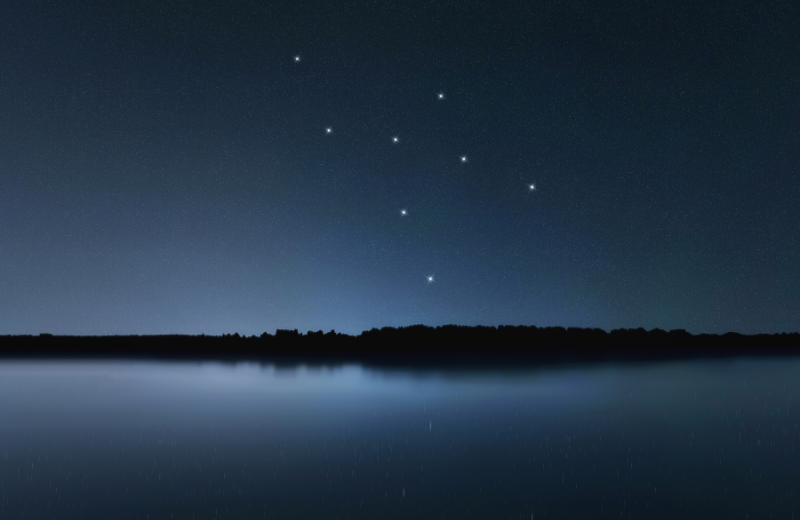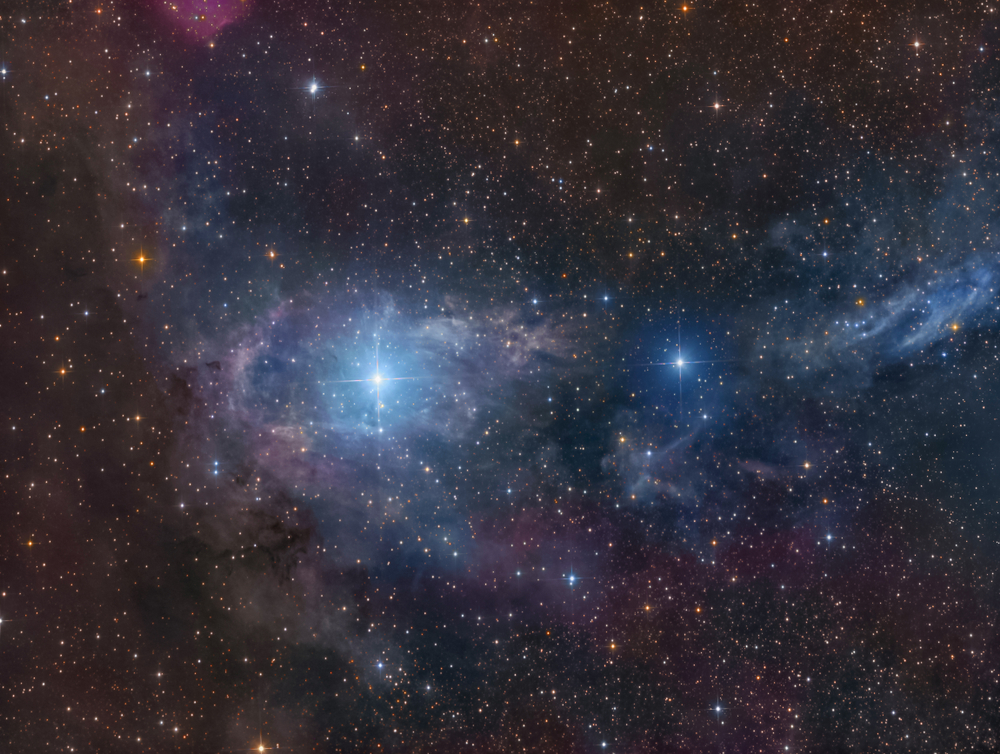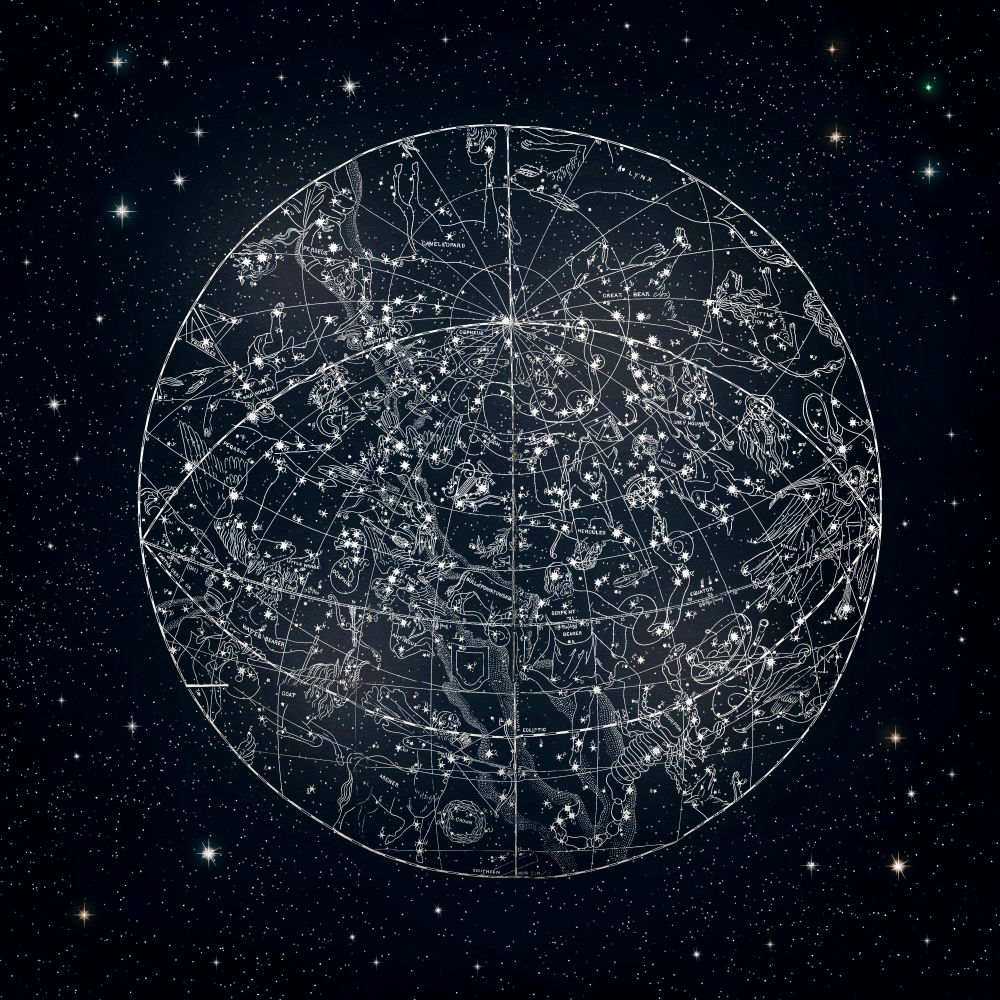Camelopardalis, the “Giraffe Constellation”, is a small yet fascinating constellation in the Northern Hemisphere. This guide shares all there is to know about Camelopardalis, from its mythological roots to its unique stars and celestial features.
Jump to:
- What is the Camelopardalis Constellation?
- What Does Camelopardalis Look Like?
- How Far is the Camelopardalis Constellation from Earth?
- The Camelopardalis Constellation Myth
- Camelopardalis’ Stars
- Nebulae in the Camelopardalis Constellation
- Finding Camelopardalis in the Sky
- Fun Facts About Camelopardalis
- Study Astronomy for £29
Recommended for you!
Best SellersWhat is the Camelopardalis Constellation?
Camelopardalis is one of the lesser-known constellations in the night sky, but that doesn’t make it any less interesting. The name “Camelopardalis” is derived from Latin, where “camelo” means camel and “pardalis” means leopard. Put together, this curious term translates to “giraffe,” because early astronomers thought the giraffe’s long neck resembled a cross between a camel and a leopard. So, why is it called the giraffe constellation? Quite simply, its scattered pattern of stars stretches across the sky, much like a giraffe's elongated neck.
What Does Camelopardalis Look Like?

If you’re hoping to spot Camelopardalis, be prepared for a bit of a challenge. Unlike some constellations with bright, easy-to-spot stars, Camelopardalis is made up of faint stars that form a sprawling, irregular shape. While it doesn’t stand out like Orion or the Big Dipper, it is still visible to the naked eye under dark skies.
The constellation doesn’t have a distinct outline, but its stars loosely form the shape of a giraffe. You’ll need some patience and a bit of imagination to trace it in the sky. The constellation’s most recognisable feature is its wide, almost formless scattering of stars that appear faint and distant.
How Far is the Camelopardalis Constellation from Earth?
Camelopardalis lies far from our home planet, with its stars spread out over vast distances. The constellation itself doesn’t have a single “distance” from Earth because it’s made up of various stars, each at a different point in space. However, the stars that form Camelopardalis generally lie hundreds to thousands of light-years away.
The Camelopardalis Constellation Myth
Unlike constellations like Hercules or Perseus, Camelopardalis doesn’t have a well-known story rooted in Greek mythology. It is, in fact, a relatively modern constellation, introduced by the astronomer Petrus Plancius in the 17th century. Its name is more of a descriptive label than a tale of heroic deeds or mythical creatures.
However, some versions of the constellation's myth are inspired by its association with long-necked animals, symbolising grace and gentleness. The giraffe motif is particularly fitting, as it stands tall and elegant in the celestial savanna.
Camelopardalis’ Stars

While Camelopardalis might not be famous for bright stars, it still has some fascinating ones worth exploring:
- Beta Camelopardalis: This is the brightest star in the constellation, but it’s still quite faint compared to other prominent stars in the sky. It’s a yellow giant star located about 870 light-years from Earth.
- CS Camelopardalis: An intriguing variable star, CS Camelopardalis changes in brightness over time, adding a dynamic touch to the constellation’s otherwise quiet nature.
- Alpha Camelopardalis: This is a massive, blue supergiant star known for its sheer size and brightness, even though it appears faint to the naked eye due to its great distance from us.
Nebulae in the Camelopardalis Constellation
Camelopardalis is home to some intriguing nebulae that make it an exciting region for astronomers and stargazers. One notable nebula is the IC 342, sometimes called the "Hidden Galaxy." This spiral galaxy is challenging to observe because it’s shrouded behind cosmic dust. Still, with a powerful telescope, you might be able to catch a glimpse of this breathtaking celestial structure.
Another fascinating object in Camelopardalis is the NGC 2403, a galaxy that belongs to the M81 group of galaxies. It’s known for its star-forming regions and can be seen with amateur telescopes, providing an excellent target for backyard astronomers.
Finding Camelopardalis in the Sky

Camelopardalis can be seen year-round from the Northern Hemisphere, but the best time to observe it is during late winter and early spring. During these months, the constellation is higher in the night sky, giving you a clearer view of its faint stars.
Locating Camelopardalis
Camelopardalis isn’t the easiest constellation to find because it doesn’t have any bright, standout stars. To spot it, follow these steps:
- Identify Neighbouring Constellations: Start by finding more familiar constellations, such as Ursa Major and Cassiopeia. Camelopardalis lies between these well-known groups of stars.
- Use a Star Chart: With a reliable star chart, trace the wide, scattered pattern of stars that make up Camelopardalis. The constellation’s faint stars loosely form the shape of a giraffe, with a bit of imagination required to connect the dots.
Viewing Camelopardalis with Binoculars or a Telescope
- With Binoculars: Since Camelopardalis is relatively dim, binoculars can help bring out its stars more clearly, especially in areas with some light pollution.
- With a Telescope: A telescope will enhance your view of Camelopardalis’ features, allowing you to explore the galaxies and nebulae within its boundaries, such as the IC 342 and NGC 2403.
Best Viewing Conditions
To get the best experience, find a dark location away from artificial lights on a clear, moonless night. A dark sky will make it easier to pick out Camelopardalis’ faint stars.
Recommended for you!
Best SellersFun Facts About Camelopardalis
- A Modern Addition: Camelopardalis is considered a modern constellation. It was officially recognised in the 17th century, which makes it relatively new compared to ancient constellations rooted in mythology.
- Pronunciation Guide: Struggling to say “Camelopardalis”? It’s pronounced as “Cam-e-lo-par-DAL-is.”
- Galactic Wonders: Despite being faint, Camelopardalis holds hidden treasures like the IC 342 and NGC 2403 galaxies, making it a captivating area for deep-sky observers.
- A Sprawling Pattern: Camelopardalis covers a substantial part of the sky, making it one of the larger constellations in terms of area.
Study Astronomy for £29
If the Camelopardalis constellation has sparked your curiosity, why not explore more about the stars and the cosmos with our Astronomy Diploma Course at Centre of Excellence? This course offers a detailed understanding of the universe, from constellations and star types to the fundamentals of space observation. Perfect for all budding astronomers, the course is available for a discounted price of £29.













